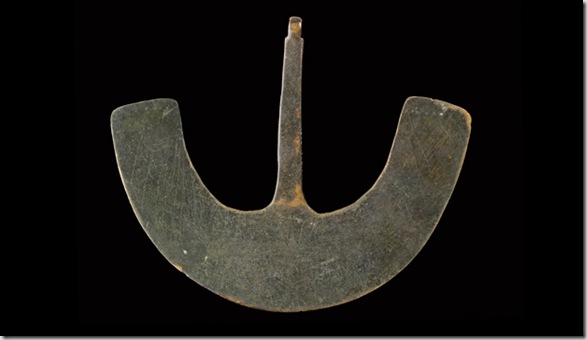
The Chimú set up an empire that stretched from Peru’s border with Ecuador to the region of Lima. In the centre of this 1000km stretch of coast the Chimú built their capital city Chan Chan, which is a corruption of the Mochic words Sian-Sian or Sun Sun. At roughly 18km2 it is the biggest adobe city in the world, and was at the time one of the largest cities in the world.
The Kingdom of Chimor emerged from the desert sands of coastal Peru between AD 900 and AD 1430. The kingdom is characterised by the hierarchical power structures of royal palaces and capital cities not found in many of the other complex societies in South America.
Power and control in the region was managed from the capital city of Chan Chan including some of the huge civil engineering projects undertaken to irrigate and transform this desert into an empire spanning 600 miles down the coastline of modern day Peru.
Black Chimu ceramics are some of the most distinctive elements of their material culture. The frequent portrayal of figures and faces bring to life the people who made and used the pots.
This distinctive style of knife design is found at many sites in South America and it was used in both practical and ritual settings. Large numbers of metal artefacts like this are found at Chimu sites like Chan Chan, the capital of the Chimu empire. These artefact collections demonstrate how this empire transformed the scale of production during this late pre-Columbian period in South America.
The Chimu empire was built upon a network of trade and tribute that funnelled its way back to the capital of Chan Chan from all of the surrounding provinces. The depiction of the llama in the pottery of these coastal peoples hints at how far these territories spread, up the coastal river valleys and into the Andean mountains.
Excavations of Royal Tombs in coastal Peru have recovered exquisite gold and silver artefacts. Objects like this silver Chimu vessel demonstrate how wealth was centralized to a powerful elite that controlled and ruled the empire with a rigid hierarchy.
A prized possession
The spondylus shell was one of the most highly valued materials in Chimu society. These marine shells normally only live in the warmer waters further north up near the present day coast of Ecuador. There are many theories, often relating to climate change, that are used to explain why they became so prized within Chimu society.
Fonte









Nessun commento:
Posta un commento